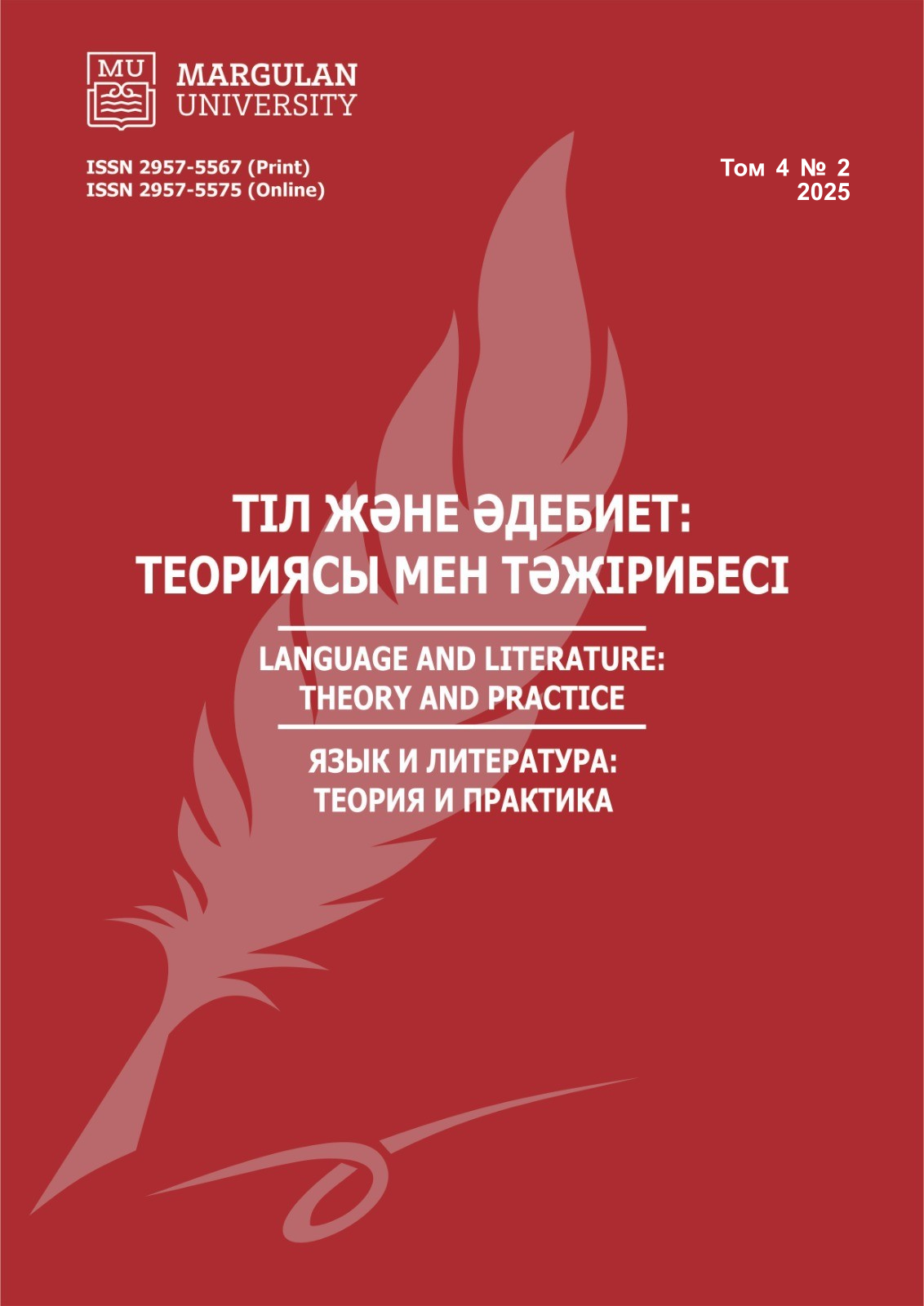SEMIOTIC TRANSFORMATION AS A METHOD FOR DEVELOPING STUDENTS’ SOCIOCULTURAL COMPETENCE
DOI:
https://doi.org/10.52301/2957-5567-2025-4-2-116-128Keywords:
Russian as a second language, bilingual education, sociocultural competence, semiotic transformation, digital platformsAbstract
The article explores the use of the method of semiotic transformation for developing students’ sociocultural competence in Russian language and literature classes in schools with Kazakh as the language of instruction. In the context of bilingual education, the authors view semiotic transformation as a means of integrating various sign systems – verbal, visual, and multimodal – into the learning process. The methodological experiment conducted in 5th grade classes involved the creation of multimodal products such as mind maps, digital books, comics, visual projects, and scenarios of intercultural interaction. The learning process was supported by the use of digital platforms such as Miro, Pixton, and StoryJumper, which facilitated the visualization of cultural meanings and engaged students in a dialogue with the target culture. Semiotic transformation was implemented through tasks involving the interpretation of illustrations, the creation of cultural routes, and the dubbing of animated films. These activities stimulated personal reflection, intercultural imagination, and active participation in the educational process. The approach presented in the article has proven to be effective as a teaching method aligned with the cognitive and emotional characteristics of the modern generation, which is oriented toward visual perception and digital technologies. This methodology can be recommended for integration into educational practice to enhance the quality of education and to develop key competencies necessary for living in a multicultural society.
References
Верещагин Е.М., Костомаров Ю.Н. Язык и культура: три лингвострановедческие концепции: лексического фона, рече-поведенческих тактик и сапиентемы. Москва: Директ-Медиа, 2014. 510 с.
Гумбольдт В. фон. Язык и философия культуры / сост., общ. ред. и вступ. статьи А. В. Гулыш, Г. В. Рамишвили. Москва: Прогресс, 1985. 451 с.
Красных В.В. Этнопсихолингвистика и лингвокультурология: лекционный курс. Москва: Гнозис, 2002. 284 с.
Люрья Н.А. Семиотическая диагностика: методология измерения эффективности трансформаций в образовании // Высшее образование в России. 2020. Т. 29, № 11. С. 122–127. https://doi.org/10.31992/0869-3617-2020-29-11-122-127
Щукин А.Н., Фролова Г.М. Методика преподавания иностранных языков: учебник для студентов учреждений высшего образования, обучающихся по направлению подготовки «Лингвистика». Москва: Академия, 2015. 287 с.
Atygayeva, Zh., & Temirgazina, Z. (2024). Methods of forming components of sociocultural competence in the study of Russian as a non-native language. Til jäne ädebïet: teorïyası men täjirïbesi / Yazyk i literatura: teoriya i praktika, 3(2), 94–114. https://doi.org/10.52301/2957-5567-2024-3-2-94-114
Constantinidou, D.A. (2023). Language education, digital citizenship, and Juri Lotman’s semiosphere. Digital Age in Semiotics & Communication, 6, 173–184. https://doi.org/10.33919/dasc.23.6.9
Domke, L.M., May, L.A., Cerrato, M.A., Sanders, E.H., Kung, M., & Bingham, G.E. (2024). How dual language bilingual education preservice teachers draw upon and develop students’ sociocultural competence. Foreign Language Annals, 57(3), 797–817. https://doi.org/10.1111/flan.12744
Jakobson, R. (1959). On linguistic aspects of translation. In R. A. Brower (Ed.), On Translation (pp. 232–239). Harvard University Press.
Khouni, O., & Boudjelal, A. (2019). Introducing the target language culture to EFL learners to enhance sociocultural competence. Arab World English Journal (AWEJ), 10(3). https://doi.org/10.2139/ssrn.3466046
McCrindle, M., Fell, A., & Buckerfield, S. (2021). Generation Alpha: Understanding our children and helping them thrive. Headline.
Mickan, P. (2017). Text-based research and teaching from a social semiotic perspective: Transformative research and pedagogy. In P. Mickan & E. Lopez (Eds.), Text-based research and teaching (pp. 15–35). Palgrave Macmillan. https://doi.org/10.1057/978-1-137-59849-3_2
Sapir, E. (1921). Language: An introduction to the study of speech. Harcourt, Brace.
Temirgazina, Z., Albekova, A., & Kurmanova, Z. (2021). One more time about the heart: Naive anatomy in the Kazakh language in comparison with Russian and English. Przegląd Wschodnioeuropejski, 12(2), 459–475. https://doi.org/10.31648/pw.6876
Whorf, B. L. (1956). Language, thought, and reality: Selected writings of Benjamin Lee Whorf (J. B. Carroll, Ed.). MIT Press.
Downloads
Published
How to Cite
Issue
Section
License
Copyright (c) 2025 Ж.Е. Атыгаева, А.Ш. Тлеулесова

This work is licensed under a Creative Commons Attribution-NonCommercial-NoDerivatives 4.0 International License.
https://creativecommons.org/licenses/by-nc/4.0/deed.en


